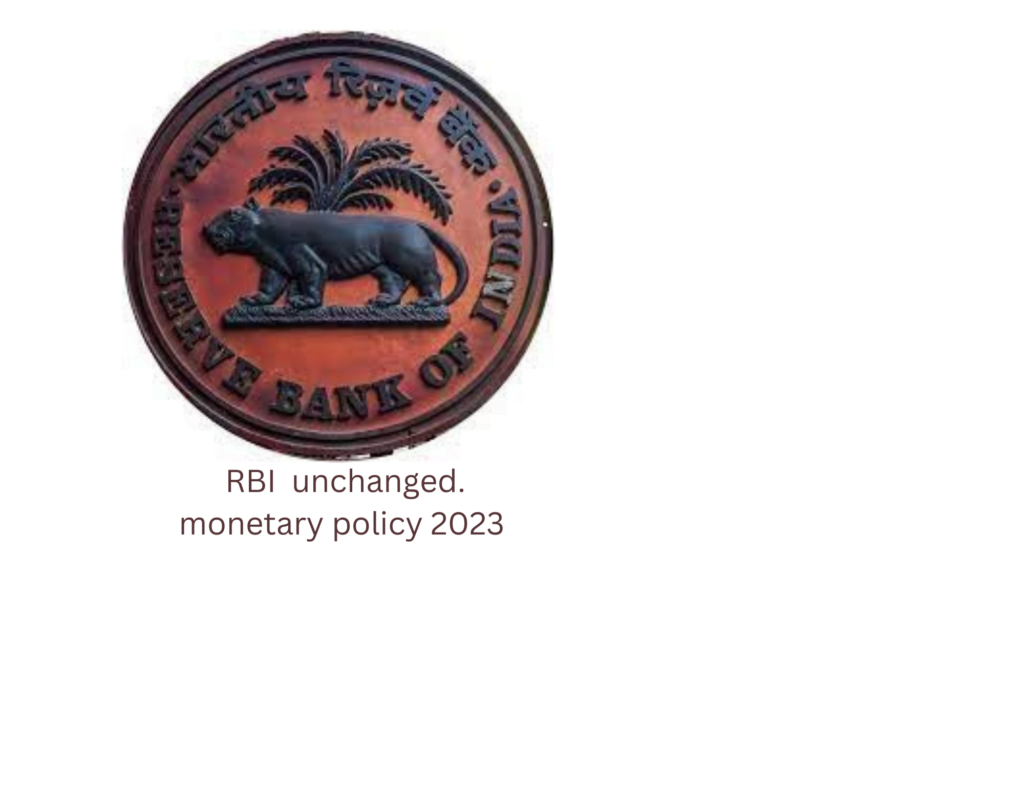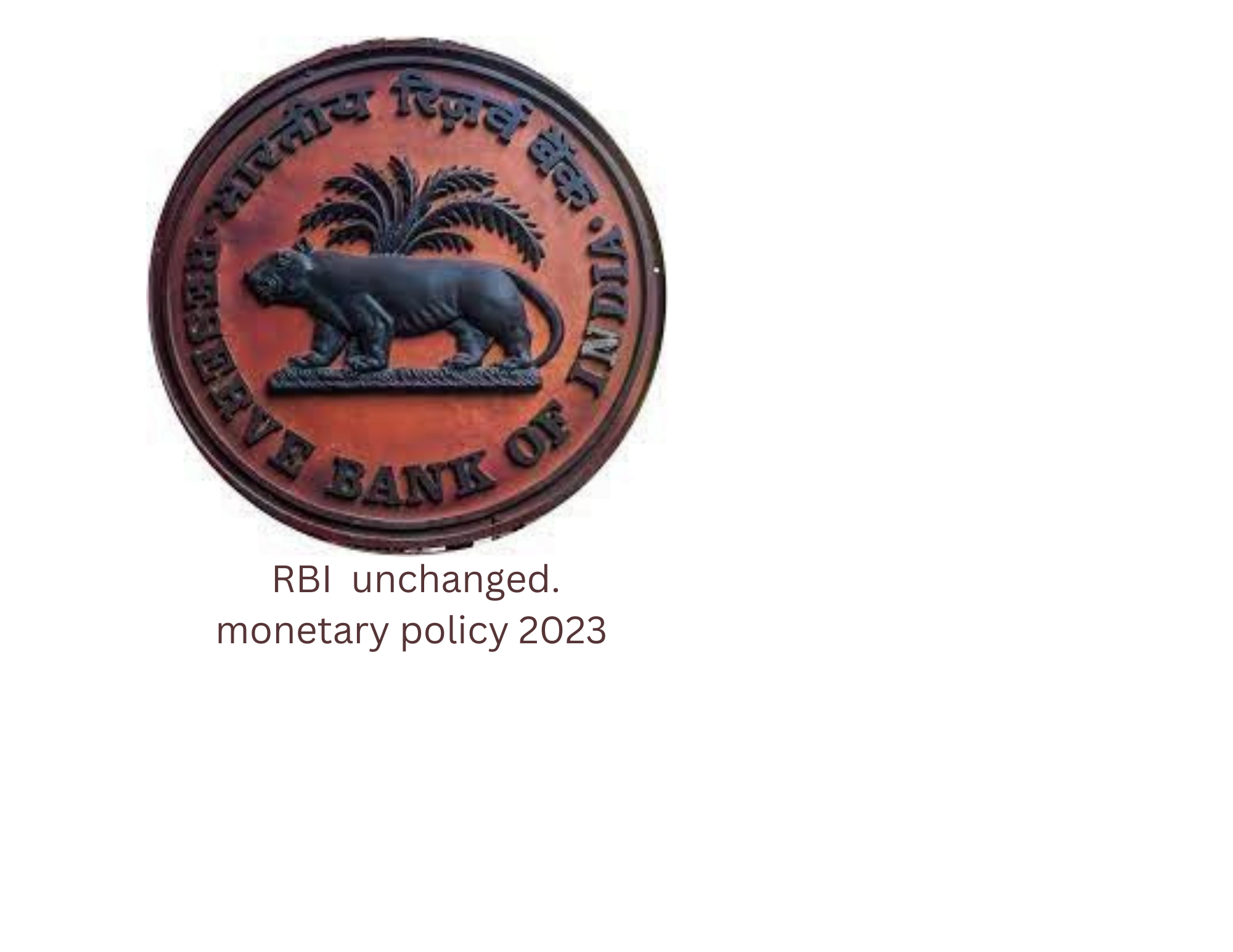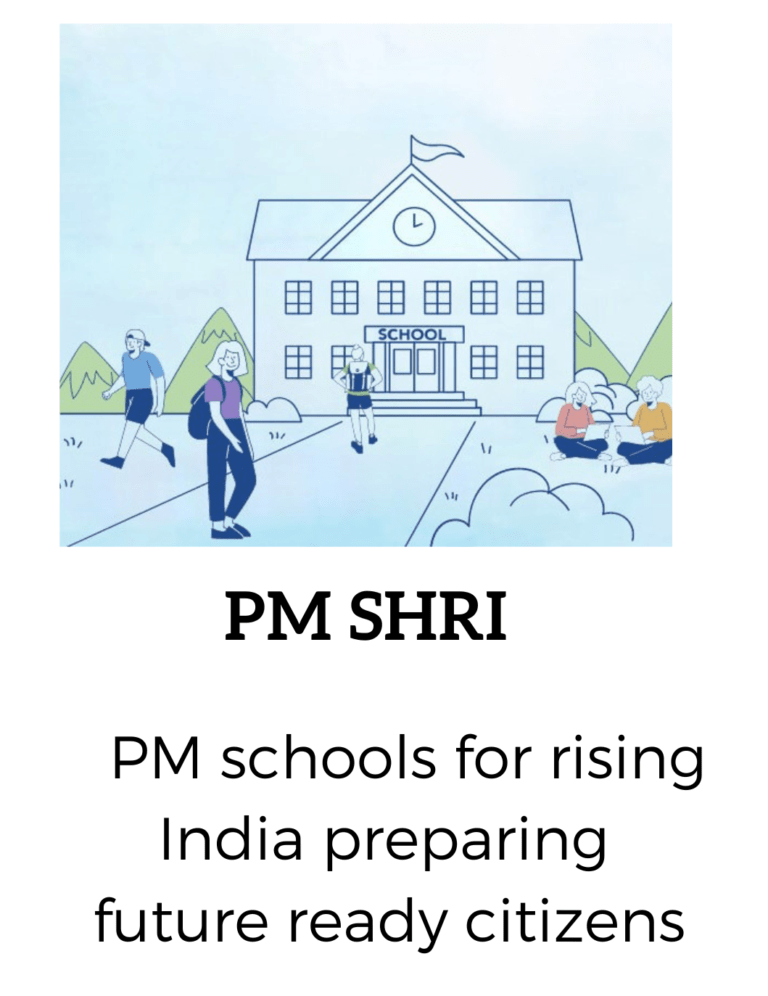Discover the Surprising Truth Behind the 2023 RBI’s Unchanged Monetary Policy.
The Reserve Bank of India (RBI) announced its fourth bi-monthly monetary policy. The RBI Governor Shaktikanta Das-led Monetary Policy Committee (MPC) meeting on October 4-6, 2023, decided to keep the rates and stance unchanged.

RBI’s Policy Category Rate
| Repo Rate (RR) | 6.50% |
| Standing Deposit Facility (SDF) Rate | 6.25% |
| Marginal Standing Facility (MSF) Rate | 6.75% |
| Bank Rate | 6.75% |
| Reverse Repo Rate (RRR) | 3.35% |
| Cash Reserve Ratio (CRR) | 4.50% |
| Statutory Liquidity Ratio | 18% |
Table of Contents
What is monetary policy

Monetary policy is a set of tools that a national central bank uses to promote sustainable economic growth by controlling the aggregate supply of money available to the national banks, consumers, and businesses.
To stabilize exchange Rate economic growth and activity to controlling inflation Price .
The monetary Policy authority often lowers the interest rates to promote spending money and borrowing. Increased money supply in the market aims to increase consumption, spending and investment. Lower interest rates mean businesses and individuals can get loans on a favorable term.
Monetary Policy Framework between the Government and the Reserve Bank of India.
Under this framework, the target of inflation to be set the Government of India, on the advice of the Reserve Bank, The targeted range of inflation should be 2% to 6% (4±2%)
What is Monetary Policy Committee (MPC) of RBI
The section 45ZB of the amended RBI Act, 1934, an empowered six-member monetary policy committee (MPC) is constituted by the Central Government.
The first MPC was constituted on September 29, 2016. Monetary Policy Committee is responsible for fixing the benchmark interest rate in India.
The monetary policy committee is a six-member panel which sets the repo rate. Repo rate acts as a benchmark for all other interest rates in the economy.
Members of [MPC]Monetary Policy Committee
The committee comprises six members, three from RBI and other three external members appointed by the union government. They are appointed for a fixed four year term and they not eligible for reappointment this post only one time.
Repo Rate
The interest rate that the RBI charges when commercial banks borrow money from it is called the repo rate.
Reverse Repo Rate
The interest rate that the RBI pays commercial banks when they park their excess cash with the central bank is called the reverse repo rate
Impact of Repo Rate on Economy
Decrease in Repo Rate
When the RBI wants to encourage economic activity in the economy, it reduces the repo rates. Doing this enables commercial banks such as the SBI to bring down the interest rates they charge (on their loans) as well as the interest rate they pay on deposits. This, in turn, incentivises people to spend money, because keeping their savings in the bank now pays back a little less, and businesses are incentivised to take new loans for new investments because new loans now cost a little less as well.
Increase in Repo Rate
RBI tries to control inflation in the economy by increasing the repo rate. By doing this, it makes borrowing a costly affair for businesses and industries and this in turn slows down investment and money supply in the market. It eventually and negatively impacts the growth of the economy, which helps in controlling inflation.
Reasons Behind RBI monetary policy 2023 unchanged
RBI Monetary Policy Committee has marginally lowered its inflation forecast for
FY24 from 5.3% to 5.2%. For the FY 2023, inflation was pegged at 6.5%
Government interventions have helped in arresting increasing inflation of cereals and products.
Food inflation eased to 4.79% in March 2023 from 5.95% in Feb 2023.
Inflation rate for milk and products eased marginally to 9.31% in March 2023 from 9.65% in February 2023.
Clothing and footwear inflation eased to 8.18% in March 2023 from 8.79% in Feb 2023 while fuel and light inflation rate moderated to 8.91% from 9.9%. The RBI’s latest inflation forecast assumes a crude oil price of $85 a barrel, down from $95 in February in 2023.
Rise in GDP
The RBI has marginally raised its GDP growth projection for FY24 to 6.5% from earlier estimate of 6.4 %. This means that the RBI now expects the Indian economy to grow by 6.5% during the financial year 2023-2024, which is slightly higher than its previous projection.
Global Banking Crisis
The failure of the US-based Silicon Valley Bank (SVB) and Signature Bank, and Credit Suisse have stirred concerns about the deeper problems in the global financial system.
Many Indian startups have relied on SVB for funding, mentorship, and networking opportunities. SVB bankruptcy led to a broader impact on the startup ecosystem in India.
It has caused a sell-off of banking stocks, and in India, it has led to a decline in the National Stock Exchange’s market capitalisation indicating that investors are reducing their positions due to the US banking crisis.
A sell-off occurs when the price of an asset or security suddenly experiences a sharp decline.
The banking indices are facing selling pressure, which could lead to the depreciation of the Indian rupee. The flight of money due to fear may lead to a reduction in capital inflow, which may have negative effects on the Indian economy.
The pause in Repo Rate by the RBI will ensure the growth of the economy. An increase in Repo Rate would have caused a low demand amid already slowing consumption and low private investment.
Impact of Unchanged RBI monetary police
Relief to Home Buyers This measure is likely to provide much-needed relief to homebuyers who have been adversely affected by inflation and increasing interest rates or loan tenures.
Higher interest rates discourage home buyers and they also lead to increased borrowing costs for developers thus impacting project costs. As the repo rate remains unchanged, commercial banks may also keep their lending and deposit rates relatively stable.
Boost to Real Estate Sector
It will bolster the sentiment for property-buying and contribute to the expansion of the real estate sector as the cost of financing for both developers and home buyers will not increase.
High Return on Debt Funds
Investors in mutual funds, particularly those who invest in debt funds, can anticipate stronger returns. Debt funds typically suffer losses when interest rates rise. Due to the inverse relationship between bond yields and prices, bond prices decline as interest rates rise. In other words, when rates are rising, debt mutual funds give meagre returns. The rewards are higher when the central bank keeps or lowers rates.
Other Important RBI Monetary Policy Guideline
UPI To Now Allow Borrowers To Access Digital Credit Lines From Banks. RBI has allowed Credit Lines at Banks through Unified Payments Interface ( UPI).
A credit line is a preset borrowing limit that the borrower can use as and when needed, until the limit is reached. As and when the borrowed money is repaid, it can be borrowed again from the available credit line. A credit line is similar to a credit card, except that you don’t need to carry any plastic cards in this case.
At present, UPI transactions are enabled between deposit accounts at banks, sometimes intermediated by pre-paid instruments, including wallets.
It is now proposed to expand the scope of UPI by enabling transfers
It is now proposed to expand the scope of UPI by enabling transfers to and from pre-sanctioned credit lines at banks, in addition to deposit accounts.
The UPI network will facilitate payments financed by credit from banks. This can reduce the cost of such offerings and help in the development of unique products for Indian markets.
Standing Deposit Facility (SDF)
The SDF is a liquidity window through which the RBI will give banks an option to park excess liquidity with it.It is different from the reverse repo facility in that it does not require banks to provide collateral while parking funds.
Marginal standing facility (MSF)
MSF is a window for banks to borrow from the Reserve Bank of India in an emergency situation when interbank liquidity dries up completely.
Bank Rate
The Bank Rate is the interest rate at which the RBI lends long-term funds to commercial banks. This rate is also set at 6.75%. RBI maintains CPI inflation forecast for FY24 at 5.4% RBI projects that Inflation is expected to average 5.4% in the fiscal year 2023–2024, which remained unchanged. Additionally, the target for economic growth remains at 6.5% for the same period.
What is CPI
CPI stands for Consumer Price Index, is a way to measure how prices of everyday items change over time. It shows the average cost increase for things people buy regularly, like groceries and services. Quarterly CPI Inflation Projections for FY23-24
Q2 FY24: 6.4% (up from 6.2%).
Q3 FY24: 5.6% (revised down from 5.7%).
Q4 FY24: 5.2% .
Q1 FY25: 5.2%
CPI headline inflation jumped by 2.6% points to 7.4% in July, primarily due to a spike in vegetable prices. It then moderated slightly in August to 6.8%.
Fuel inflation – Increased to 4.3% in August.
Core inflation, which excludes food and fuel
Softened to 4.9% during July-August 2023. Core inflation has decreased by approximately 140 basis points from its highest point in January 2023.
CASH RESERVE RATIO (CRR)
It is the amount of minimum deposit that the commercial banks are required to maintain with RBI.
CRR is the percentage of cash required to be kept in reserves against the bank’s total deposits. CRR can be either stored in the bank’s vault or is sent to the RBI. Banks don’t earn any interest on that money. CRR cannot be used for lending purposes like loaning corporates or individual borrowers. If the CRR is high, the commercial bank’s capacity to create credit will be less, and if the CRR is low, the commercial bank’s capacity to create credit will be high.
It requires banks to have only cash reserves with the RBI.Either stored in the bank’s vault or is sent to the RBI Banks earn no return under CRR It helps mainly in controlling liquidity by trapping cash with RBI.
STATUTORY LIQUID RATIO (SLR)
It is the percentage of total public deposits that the banks have to maintain at any point in time is SLR.
The Technically, it is the share of Net demand and time liabilities (NDTL) that a bank is required to maintain in safe and liquid assets, such as unencumbered government securities, cash and gold. These are not reserved with the Reserve Bank of India (RBI) but with banks themselves. As per the amendment in 2007 in RBI act 1949, SLR can vary from 0 % to 40%
banks are asked to have reserves of liquid assets like RBI approved securities, cash and gold
SLR has to be maintained with the bank itself.
Banks earn returns under SLR.
It controls excess credit growth by making banks invest in a few instruments which are SLR permissible avoiding credit to the public
if you read about ONDC Network gift card below the link




[…] if you read about RBI monetory policy link […]